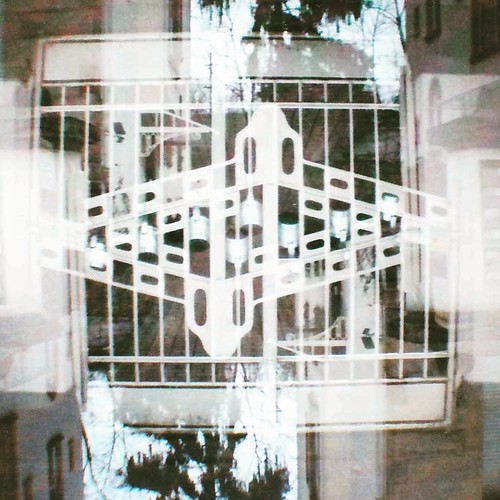Ions about how very good it will taste. The dilemma of whether to update an existing memory or create a new one particular hence boils down for the questionis the surprising event the consequence of a brand new lead to or an old one particular This theory implies that retrieving a memory nudges the brain to infer that its associated cause is after once more active and, considering the fact that this can be an old trigger, it means that the memory are going to be eligible for updating. Numerous experiments have been performed around the topic of modifying memories, but this really is the first computational model that offers a unifying explanation for the outcomes. The following step is to perform out tips on how to apply the model, which is phrased in abstract terms, to networks of neurons which might be more biologically realistic.DOI.eLifespeculate about such an implementation inside the . Addressing this query is actually a logical next step for this line of research.Retrievalinduced memory modification in pavlovian conditioningWhile retrievalinduced memory modification has been documented within a selection of domainsincluding procedural (Censor et al ; Walker et al), episodic (Hupbach et al ; Karpicke and Roediger,), and instrumental (Lee et al b; Xue et al) learningwe focus on Pavlovian conditioning, mainly because it offers a number of the most elementary and wellstudied examples. Through the acquisition phase of a common Pavlovian conditioning experiment, a motivationally neutral conditional stimulus (CS; e.g tone) is repeatedly paired using a motivationally reinforcing unconditional stimulus (US; e.g a shock). This repeated pairing leads to the animal producing a conditioned response (CR; e.g freezing) towards the CS. Inside a subsequent extinction phase, the CS is presented alone, plus the animal progressively ceases to make the CR. A final test phase, right after some delay, probes the animal’s longterm memory with the CSUS relationship by presenting the CS alone. Inside a classic experiment applying a Pavlovian worry conditioning activity, Misanin et al. found that electroconvulsive shock had  no effect on a fear memory acquired each day previously; nonetheless, if the animal was briefly reexposed for the acquisition cue prior to electroconvulsive shock, the animal subsequently exhibited loss of worry. This getting was followed by various comparable demonstrations of postretrieval memory modification (see Riccio et al , to get a historical overview). Contemporary neuroscientific interest in this phenomenon was ignited by Nader et alwho showed that retrograde amnesia for an acquired worry memory could be developed by injectionGershman et al. eLife ;:e. DOI.eLife. ofResearch articleNeuroscienceof a protein synthesis inhibitor (PSI) in to the lateral nucleus from the amygdala shortly following reexposure towards the acquisition cue. Subsequent studies have provided a detailed neural and behavioral characterization of postretrieval memory modification, describing a sizable cast of molecular mechanisms (Tronson and Taylor,) and various boundary conditions on its occurrence (Dudai, ; Duvarci and Nader, ; Nader and Hardt,). For example, it has been shown that stronger and older memories are harder PubMed ID:https://www.ncbi.nlm.nih.gov/pubmed/10899433 to modify following retrieval (Suzuki et al), and that the mod`re ification is cuespecific (Doye et al). Importantly, there is certainly now evidence that memory modification is PF-04929113 (Mesylate) chemical information get CAL-120 usually obtained using a purely behavioral procedure. In particular, Monfils et al. and Schiller et al. showed, in rats and in humans, that reexposing a subject to the cue shortly (min to hr) before extinction instruction is sufficient to minimize conditioned responding at test. T.Ions about how very good it is going to taste. The dilemma of no matter if to update an current memory or create a new one as a result boils down towards the questionis the surprising occasion the consequence of a brand new result in or an old a single This theory implies that retrieving a memory nudges the brain to infer that its linked bring about is as soon as once again active and, because this is an old lead to, it implies that the memory will be eligible for updating. Quite a few experiments have been performed around the topic of modifying memories, but this really is the initial computational model that offers a unifying explanation for the outcomes. The following step should be to perform out how to apply
no effect on a fear memory acquired each day previously; nonetheless, if the animal was briefly reexposed for the acquisition cue prior to electroconvulsive shock, the animal subsequently exhibited loss of worry. This getting was followed by various comparable demonstrations of postretrieval memory modification (see Riccio et al , to get a historical overview). Contemporary neuroscientific interest in this phenomenon was ignited by Nader et alwho showed that retrograde amnesia for an acquired worry memory could be developed by injectionGershman et al. eLife ;:e. DOI.eLife. ofResearch articleNeuroscienceof a protein synthesis inhibitor (PSI) in to the lateral nucleus from the amygdala shortly following reexposure towards the acquisition cue. Subsequent studies have provided a detailed neural and behavioral characterization of postretrieval memory modification, describing a sizable cast of molecular mechanisms (Tronson and Taylor,) and various boundary conditions on its occurrence (Dudai, ; Duvarci and Nader, ; Nader and Hardt,). For example, it has been shown that stronger and older memories are harder PubMed ID:https://www.ncbi.nlm.nih.gov/pubmed/10899433 to modify following retrieval (Suzuki et al), and that the mod`re ification is cuespecific (Doye et al). Importantly, there is certainly now evidence that memory modification is PF-04929113 (Mesylate) chemical information get CAL-120 usually obtained using a purely behavioral procedure. In particular, Monfils et al. and Schiller et al. showed, in rats and in humans, that reexposing a subject to the cue shortly (min to hr) before extinction instruction is sufficient to minimize conditioned responding at test. T.Ions about how very good it is going to taste. The dilemma of no matter if to update an current memory or create a new one as a result boils down towards the questionis the surprising occasion the consequence of a brand new result in or an old a single This theory implies that retrieving a memory nudges the brain to infer that its linked bring about is as soon as once again active and, because this is an old lead to, it implies that the memory will be eligible for updating. Quite a few experiments have been performed around the topic of modifying memories, but this really is the initial computational model that offers a unifying explanation for the outcomes. The following step should be to perform out how to apply  the model, which can be phrased in abstract terms, to networks of neurons that happen to be more biologically realistic.DOI.eLifespeculate about such an implementation inside the . Addressing this question can be a logical subsequent step for this line of investigation.Retrievalinduced memory modification in pavlovian conditioningWhile retrievalinduced memory modification has been documented within a variety of domainsincluding procedural (Censor et al ; Walker et al), episodic (Hupbach et al ; Karpicke and Roediger,), and instrumental (Lee et al b; Xue et al) learningwe concentrate on Pavlovian conditioning, due to the fact it offers some of the most elementary and wellstudied examples. Through the acquisition phase of a standard Pavlovian conditioning experiment, a motivationally neutral conditional stimulus (CS; e.g tone) is repeatedly paired with a motivationally reinforcing unconditional stimulus (US; e.g a shock). This repeated pairing results in the animal producing a conditioned response (CR; e.g freezing) for the CS. Within a subsequent extinction phase, the CS is presented alone, along with the animal progressively ceases to make the CR. A final test phase, soon after some delay, probes the animal’s longterm memory on the CSUS connection by presenting the CS alone. In a classic experiment employing a Pavlovian worry conditioning process, Misanin et al. identified that electroconvulsive shock had no impact on a worry memory acquired a day previously; even so, if the animal was briefly reexposed to the acquisition cue before electroconvulsive shock, the animal subsequently exhibited loss of worry. This finding was followed by a lot of equivalent demonstrations of postretrieval memory modification (see Riccio et al , for any historical overview). Contemporary neuroscientific interest within this phenomenon was ignited by Nader et alwho showed that retrograde amnesia for an acquired worry memory could possibly be made by injectionGershman et al. eLife ;:e. DOI.eLife. ofResearch articleNeuroscienceof a protein synthesis inhibitor (PSI) into the lateral nucleus from the amygdala shortly right after reexposure to the acquisition cue. Subsequent studies have offered a detailed neural and behavioral characterization of postretrieval memory modification, describing a sizable cast of molecular mechanisms (Tronson and Taylor,) and various boundary conditions on its occurrence (Dudai, ; Duvarci and Nader, ; Nader and Hardt,). As an illustration, it has been shown that stronger and older memories are tougher PubMed ID:https://www.ncbi.nlm.nih.gov/pubmed/10899433 to modify following retrieval (Suzuki et al), and that the mod`re ification is cuespecific (Doye et al). Importantly, there’s now proof that memory modification is usually obtained having a purely behavioral procedure. In specific, Monfils et al. and Schiller et al. showed, in rats and in humans, that reexposing a subject to the cue shortly (min to hr) just before extinction education is enough to decrease conditioned responding at test. T.
the model, which can be phrased in abstract terms, to networks of neurons that happen to be more biologically realistic.DOI.eLifespeculate about such an implementation inside the . Addressing this question can be a logical subsequent step for this line of investigation.Retrievalinduced memory modification in pavlovian conditioningWhile retrievalinduced memory modification has been documented within a variety of domainsincluding procedural (Censor et al ; Walker et al), episodic (Hupbach et al ; Karpicke and Roediger,), and instrumental (Lee et al b; Xue et al) learningwe concentrate on Pavlovian conditioning, due to the fact it offers some of the most elementary and wellstudied examples. Through the acquisition phase of a standard Pavlovian conditioning experiment, a motivationally neutral conditional stimulus (CS; e.g tone) is repeatedly paired with a motivationally reinforcing unconditional stimulus (US; e.g a shock). This repeated pairing results in the animal producing a conditioned response (CR; e.g freezing) for the CS. Within a subsequent extinction phase, the CS is presented alone, along with the animal progressively ceases to make the CR. A final test phase, soon after some delay, probes the animal’s longterm memory on the CSUS connection by presenting the CS alone. In a classic experiment employing a Pavlovian worry conditioning process, Misanin et al. identified that electroconvulsive shock had no impact on a worry memory acquired a day previously; even so, if the animal was briefly reexposed to the acquisition cue before electroconvulsive shock, the animal subsequently exhibited loss of worry. This finding was followed by a lot of equivalent demonstrations of postretrieval memory modification (see Riccio et al , for any historical overview). Contemporary neuroscientific interest within this phenomenon was ignited by Nader et alwho showed that retrograde amnesia for an acquired worry memory could possibly be made by injectionGershman et al. eLife ;:e. DOI.eLife. ofResearch articleNeuroscienceof a protein synthesis inhibitor (PSI) into the lateral nucleus from the amygdala shortly right after reexposure to the acquisition cue. Subsequent studies have offered a detailed neural and behavioral characterization of postretrieval memory modification, describing a sizable cast of molecular mechanisms (Tronson and Taylor,) and various boundary conditions on its occurrence (Dudai, ; Duvarci and Nader, ; Nader and Hardt,). As an illustration, it has been shown that stronger and older memories are tougher PubMed ID:https://www.ncbi.nlm.nih.gov/pubmed/10899433 to modify following retrieval (Suzuki et al), and that the mod`re ification is cuespecific (Doye et al). Importantly, there’s now proof that memory modification is usually obtained having a purely behavioral procedure. In specific, Monfils et al. and Schiller et al. showed, in rats and in humans, that reexposing a subject to the cue shortly (min to hr) just before extinction education is enough to decrease conditioned responding at test. T.
